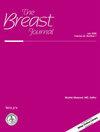Comparative Efficacy of Neoadjuvant Endocrine Therapy, Neoadjuvant Chemotherapy, and Neoadjuvant Chemo-Endocrine Therapy in Estrogen Receptor–Positive Breast Cancer Patients: A Meta-Analysis
Abstract
Neoadjuvant therapy before surgery offers varying benefits as a well-established treatment option for breast cancer. This study specifically evaluated the effectiveness of neoadjuvant endocrine therapy (NET), neoadjuvant chemotherapy (NCT), and neoadjuvant chemo-endocrine therapy (NCET) in patients with estrogen receptor (ER)–positive breast cancer. This meta-analysis was conducted and reported in accordance with the Preferred Reporting Items for Systematic Reviews and Meta-Analyses (PRISMA) guidelines. Electronic searching was conducted to retrieve articles from databases including PubMed, Cochrane Library, EMBASE, CNKI, and Wanfang. The primary outcome measured by odds ratios (ORs) with 95% confidence intervals (CIs) focused on assessing pooled effect sizes. Random-effects or fixed-effect models were conducted according to the existence of statistical heterogeneity. A total of 15 eligible articles were included in the analysis. The results indicated clinical response (CR) (OR = 0.54; 95% CI = 0.41 to 0.73; I2 = 39.6%) and clinical complete response (cCR) (OR = 0.31; 95% CI = 0.12 to 0.85; I2 = 68.0%) after NET was significantly higher than NCT. However, no significant difference was shown in pathological complete response (pCR) (OR = 0.49; 95% CI = 0.23 to 1.04; I2 = 0.0%) and breast-conserving surgery (BCS) (OR = 0.49; 95% CI = 0.23 to 1.04; I2 = 0.0%). The combined paradigm of NCET presented no significant improvement compared with monotherapy of NET or NCT. Overall, both NET and NCT are effective neoadjuvant treatment options for patients with ER+ breast cancer. More explicit clinical decision indicators need to be further clarified. And NCET does not offer additional benefits over NET or NCT in patients with ER+ breast cancer.


 求助内容:
求助内容: 应助结果提醒方式:
应助结果提醒方式:


